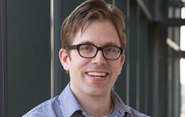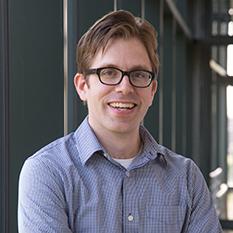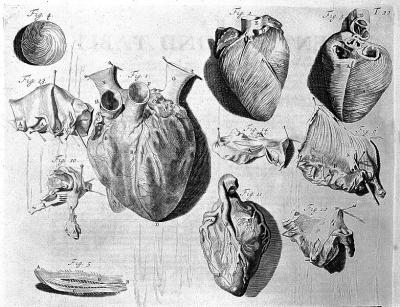Seeking Sensors in the Heart, Stuart Campbell Wins CAREER Award

Stuart Campbell, associate professor of biomedical engineering & cellular and molecular physiology, has been selected to receive a 2017 Faculty Early Career Development (CAREER) award from the National Science Foundation (NSF).
 The award provides $500,000 in funding for Campbell’s project, “A Systems Approach to Discovering Mechanical Sensors in Heart Muscle Cells.” Awarded to researchers who exemplify the role of teacher-scholars, the CAREER is the NSF’s most prestigious award for junior faculty.
The award provides $500,000 in funding for Campbell’s project, “A Systems Approach to Discovering Mechanical Sensors in Heart Muscle Cells.” Awarded to researchers who exemplify the role of teacher-scholars, the CAREER is the NSF’s most prestigious award for junior faculty.
For the project, Campbell aims to identify the sensors in heart cells that trigger certain physiological changes. Doing so would not only shed light on physiological responses of the heart, but potentially lead to better understanding of the causes of some life-threatening heart conditions.
Campbell’s research group will subject engineered heart tissue samples to ten diverse “mechanical loads.” That is, the samples would be stretched, pulled and manipulated in different ways, all with the purpose of triggering what are known as “mechanosensitive” proteins – molecular sensors capable of modifying gene expression. The researchers will then analyze the samples to see what genes get switched on or turned off under each condition. 
To interpret the results, Campbell’s research team will simulate the different mechanical loading conditions in a computer model, using equations to predict how mechanosensitive proteins will respond in each case.
“The idea is to see if we can link our predictions of molecular structure to changes in gene expression,” Campbell said. “By trying this shotgun approach over many different conditions, sensors and genes, we hope to find a pattern that nobody has seen before.”
Scientists have long known of the physiological changes that hearts undergo to accommodate certain activities. For instance, the hearts of competitive swimmers tend to have larger chambers. That’s because the aerobic activity causes blood to flow more easily through muscle tissue. The increased flow allows more blood to return to the heart, resulting in greater inflation of its chambers between each beat.
“Apparently, over time this excessive stretching of the heart walls causes the ventricle to enlarge, meaning that each heart cell has to grow longer,” Campbell said. “So the question is, how does the heart cell know that it needs to get longer? What is the sensor that allows that to take place?”
Besides answering fundamental questions about the heart, Campbell’s research could lead to a better understanding of how certain stresses or gene mutations cause pathological hypertrophy, a life-threatening condition in which the heart increases in mass but decreases in productivity.
Campbell said the five-year project borrows from the field of systems biology. Rather than study one thing on its own, breaking it down and examining it in isolation, systems biologists take a step back and look at how the many parts work together.
“The human body is a symphony of many interacting parts and processes, and the principle of systems biology is that there are things we can only learn by putting them back together,” Campbell said. “Engineers are comfortable with this idea, since analysis of complex systems is exactly what we are trained to do.”
(Heart illustration from Wellcome Trust)

